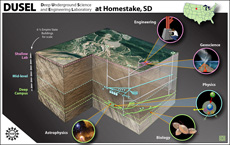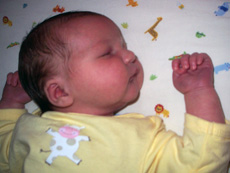|
Wed., July 11
11:00 a.m.
Fermilab ILC R&D Meeting - Comitium, WH-2SE (NOTE LOCATION)
Speaker: C. Ginsburg, Fermilab
Title: ILC Vertical Cavity Test Facility at Fermilab
3:30 p.m.
DIRECTOR'S COFFEE BREAK - 2nd Flr X-Over
THERE WILL BE NO FERMILAB COLLOQUIUM THIS WEEK
Thurs., July 12
1:00 p.m.
ILC ALCPG Physics and Detector R&D Seminar - Hornets' Nest, WH-8XO
Speaker: N. Solomey. Wichita State University
Title: Tagged Neutrons and ILC Calorimeter R&D
2:30 p.m.
Theoretical Physics Seminar - Curia II
Speaker: S. Willenbrock, University of Illinois, Urbana-Champaign
Title: Choosing the Factorization Scale in Perturbative QCD
3:30 p.m.
DIRECTOR'S COFFEE BREAK - 2nd Flr X-Over
THERE WILL BE NO ACCELERATOR PHYSICS AND TECHNOLOGY SEMINAR TODAY
Click here for NALCAL,
a weekly calendar with links to additional information.
|
Wednesday, July 11
-Portabello harvest grain
-Santa Fe chicken quesadilla
-Terkiyaki chicken w/vegetables
-Beef stroganoff
-Triple decker club
-Assorted sliced pizza
-Pesto shrimp linguini w/leeks & tomatoes
Wilson Hall Cafe Menu |
|
Wednesday, July 11
Lunch
- Charcuterie salad
- Peach and strawberry shortcakes
Thursday, July 12
Dinner
- Marinated mussels
- Beef & vegetable kebabs
- Rice pilaf
- Lemon cheesecake w/gingersnap crust
Chez Leon Menu
Call x4598 to make your reservation. |
|
|
Homestake chosen as site of underground laboratory

NSF has made an award to a team headed by Kevin Lesko of the University of California at Berkeley to develop a technical design for a Deep Underground Science and Engineering Laboratory, or DUSEL.
Credit: Zina Deretsky, National Science Foundation
The National Science Foundation (NSF) today announced selection of a University of California-Berkeley proposal to produce a technical design for a Deep Underground Science and Engineering Laboratory (DUSEL) at the former Homestake gold mine near Lead, S.D. The Homestake team, headed by Kevin Lesko, could receive up to $5 million per year for up to three years.
A 22-member panel of external experts, all screened for conflicts of interest, exhaustively merit-reviewed proposals from four teams and unanimously determined that the Homestake proposal offered the greatest potential for developing a DUSEL, and NSF concurred with the panel's recommendation. The agency's selection of the Homestake proposal provides funding only for design work. Any decision to construct and operate a DUSEL would entail a sequence of approvals by NSF and the National Science Board; funding would then have to be requested by the Administration and approved by Congress.
"We are excited about the opportunities in underground research and education that a DUSEL would provide and look forward to working with all of the research communities to develop a well-conceived plan for this unique, world-leading facility at the Homestake Mine," said Tony Chan, assistant director for the NSF Directorate of Mathematical and Physical Sciences. "In tandem with the design of the facility infrastructure, NSF also will begin working with researchers to identify the initial suite of experiments that might be deployed in DUSEL."
Over the past decade, a dozen "blue-ribbon" independent reports from the National Academies and multiagency government committees have emphasized the need for a DUSEL, and various candidate sites have been discussed. In September 2006, NSF solicited proposals to produce technical designs for a DUSEL at one specific site. By the January 2007 deadline, four teams, each focusing on a different location, had submitted proposals.
The review panel included outside experts from relevant science and engineering communities and from supporting fields such as human and environmental safety, underground construction and operations, large project management, and education and outreach. Scientists from Japan, Italy, the United Kingdom and Canada also served on the panel. The review process included site visits by panelists to all four locations, and two meetings to review the information, debate and vote on which--if any--of the proposals would be recommended for funding.
Read more
|
From Interactions.org,
July 9, 2007
10,000 ton ALICE gets her UK-built 'Brain'
As construction of the World's largest machine, the Large Hadron Collider (LHC) at CERN in Geneva (Switzerland), gears up for completion next year, the four main experiments, that will study different aspects of the resulting high-energy particle collisions, are also gearing up. For one such experiment, called ALICE, this process got a step closer last week when a crucial part of the 10,000-ton detector, the British-built Central Trigger Processor (CTP), was installed in the ALICE cavern, some 150 feet underground.
"The CTP is essentially the electronic brain of the whole ALICE experiment", says Dr David Evans of the University of Birmingham, "it can receive up to 60 input signals from various sub-detectors and sensors every 25ns (25 billionths of a second) and make complex decisions in less than 100ns (a tenth of a millionth of a second). The CTP decides if an interesting particle collision has taken place and tells the many sub-detectors of ALICE whether to collect the data or not."
The ALICE experiment will probe the mysteries surrounding the structure of matter. Head-on collisions of lead nuclei at the LHC will create sub-atomic sized fireballs with huge temperatures and densities and recreate the conditions that existed less than a millionth of a second after the Big Bang.
Read more
|
|
|
Beyond the Standard Model
Today's column is by Scott Dodelson, the acting head of the Center for Particle Astrophysics.
 |
| Scott Dodelson |
One of the ways I have fallen short as a father is I haven't taken to the Harry Potter books. While the good moms and dads have been reading magical tales of wizards to their children at bedtime, I have force-read to each of my kids in turn a book about rabbits, Watership Down. I'm now on my third reading, and we recently came to the part where the rabbits need to cross the Enborne River. The traditional method - swimming across - would be hard for most and impossible for the weakest, so they pursue an innovative alternative (a raft nudged across by the stronger swimmers), which gets them to the other side.
Physicists are also trying to reach "the other side." The Standard Model works extraordinarily well, but all of us are now scrambling to find physics beyond the Standard Model. The traditional way to discover new fundamental physics is to use accelerators. An alternative approach that has emerged only recently is to consider evidence from space. Observations of the cosmic microwave background, supernovae, and galaxies (for example, in the Sloan Digital Sky Survey) have convinced us that dark matter and dark energy dominate the energy budget of the universe. Current experiments (CDMS, Coupp, SDSS) are now collecting data, and many people at Fermilab are planning and building future experiments (DES, SuperCDMS, SNAP,...) that will teach us about this new physics.
Just as exciting is the very real possibility that we will soon have company: Those taking the more direct approach of detecting accelerator-produced particles are about to join us on the other side. It is possible that the Tevatron will find evidence for supersymmetry in the coming year or two. If so, we will be one step closer to solving the mystery of the identity of the dark matter. When the LHC turns on, the chances will get even better that dark matter or its cousins will be discovered. Finding dark matter in an underground experiment such as SuperCDMS and in an accelerator search ... well that would be magical.
|
Newest member of the Fermilab family

Congratulations to Ben Kilminster, a CDF collaborator from Ohio State, and
Florencia Canelli, a CDF collaborator from Fermilab, proud new parents of Tobias Canelli Kilminster. Tobias was born on July 2, 2007 and weighed 10 lbs, 3 oz and was 22 inches long at birth.
|
|
Vacancies in DOE Office of Science
The U.S. Department of Energy's Office of Science is seeking a highly qualified candidate with outstanding scientific achievements to fill the position of physicist. Apply here.
Retirement Income Options Seminar
Today TIAA-CREF will present a seminar, titled "Getting Ready for Retirement." The seminar will be presented by individual consultant, Chad Stein. The presentation will be given at 10:00 a.m. and 1:30 p.m. in the Curia II conference room located in Wilson Hall on the 2nd floor, southwest side of the building.
Kyuki-Do classes
Kyuki-Do is a Korean martial art based on Taekwondo, but includes Hapkido, Judo, and Jujitsu. The next class will begin July 9 and run through August 15. Classes are held on Mondays and Wednesdays from 5:00 - 6:00 p.m. in the exercise room of the Recreation Facility. Cost is $45 per 6-week session. You must be a member of the Recreation Facility to join, and must register through the Recreation Office by July 6.
NALWO Chicago Boat Tour
NALWO will host a Chicago sightseeing boat tour on Thursday, July 12 from 9:45 a.m. until 4 p.m. From a boat on the Chicago River, attendees can see Chicago architecture and historic landmarks. A bus will leave the Lederman Education Center at 9:45 a.m. and will return at 4 p.m. $18 for adults, $8 for children ages 3-11 and free for children younger than three. For more information or to register, contact Selitha Raja by phone at (630) 305-7769 or via email.
Additional Activities |
|